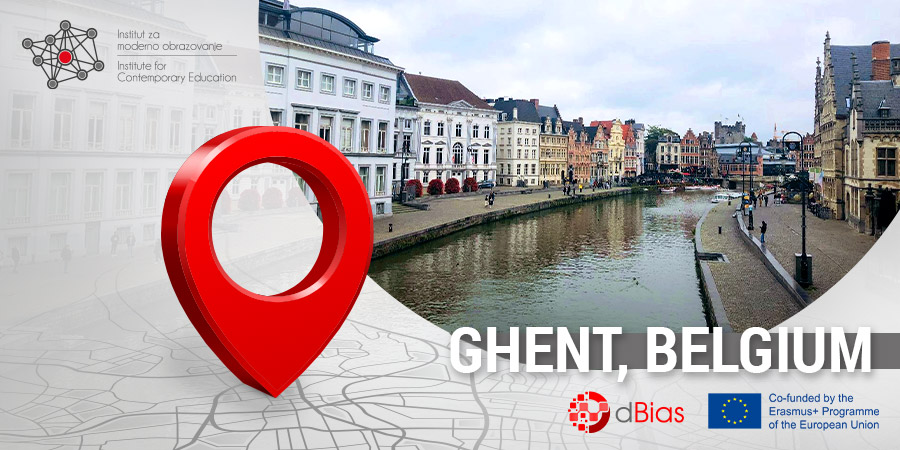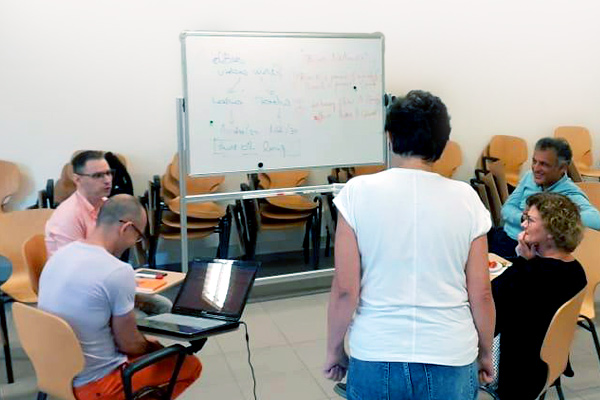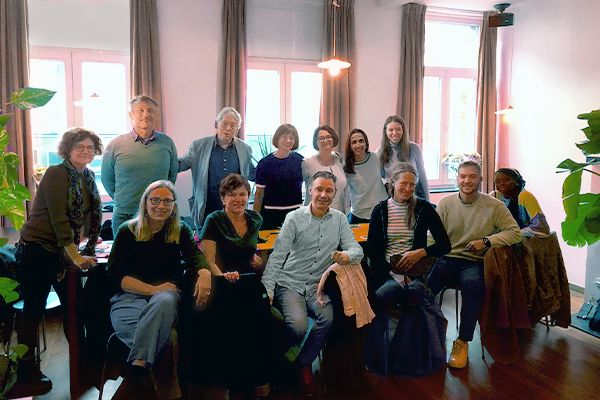
dBias project partners meet offline for the first time
From September 29 through October 3, there was another gathering of the teams involved in “The Art of De-biasing (dBias)” project – their first offline one.
The instability of the epidemiological situation infused a sense of uncertainty into the preparations for the meeting, and necessitated the need to carefully plan and organize all the aspects concerning the conditions regarding traveling and staying abroad. The resolve to overcome the organizational obstacles speaks about the dedication of the teams, and the importance they place on the value of meeting in person. This meeting was an opportunity to make an important step forward in the development of project materials, and reach agreements regarding everything that had been recognized as important aspects of further action.
The meeting place – Ghent
As a university town, Ghent is a place whose architecture and general atmosphere provide optimum conditions for productive work. The wonderful hosts enriched the sightseeing with frequent helpings of chocolate products, thereby ensuring a quite comprehensive experience. It would appear that chocolate deserves a nod for its contribution to the efficiency of this gathering.
How important is it to meet in person?
Although the motivation and dedication of the team members had never been an issue, this meeting provided further proof of the importance of meeting in person.
Productivity is higher
Direct encounter facilitated the exchange of messages among the members, which lead to a higher degree of engagement and focus. Ideas abounded in quick succession, and any member’s motivation set in motion the motivation of the entire group.
Creativity is higher
Creativity is a close companion of productivity. Unencumbered by technical issues that often characterize work in a digital environment, the in-person contact contributed to the innovativeness of the presented ideas.
Participants are more critical
Another person’s critical insights can be indispensable when it comes to producing great ideas. Of course, this criticism has to be constructive, formulated in a way that makes it clear that it is not directed towards the person, but towards the elements of work where there is room for improvement. The stronger focus brought about by working in-person led to a higher level of the participants’ sensitivity to the coherence of the presented ideas, i.e., to an improved ability to efficiently perceive the critical points.

We have already listed the undoubtable advantages of working in-person, but there is another specific fact that ought to be mentioned. Namely, ensuring the continuity of the process, i.e., the environment, conditions and time for work, greatly contributes to efficiency. This level of dedication can only be achieved through stepping out of the routine and positioning oneself into a context where the focus is clearly on project-related activities.
Of course, there is also the social aspect, as spending time together lad to creating a stronger sense of connection between the team members. This connectedness, in turn, heightened the sense of identification with the project, and therefore – provided a higher level of engagement and dedication to project tasks.
Further steps
The months ahead are expected to bring the completion of the materials which will be used for developing the awareness of cognitive biases, and their transfer into the digital format. The plan also includes activities aimed at further promotion of this topic, so expect new information soon!



 Srpski
Srpski